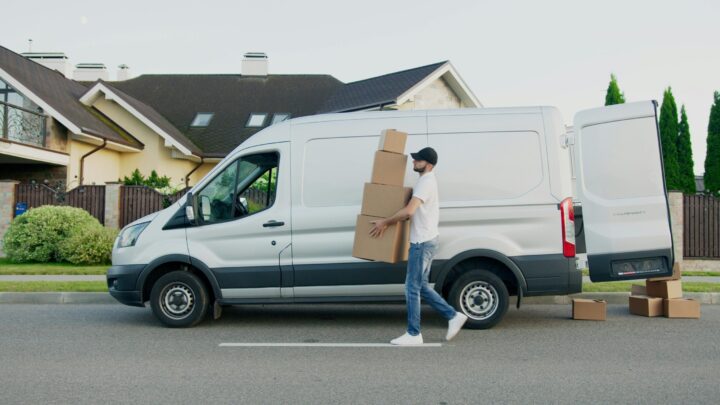Packing Up A Sustainable Future for Meal Kit Delivery
In recent years, the convenience of frozen food delivery and meal kits has surged, offering consumers a hassle-free solution to meal preparation. However, beneath this convenience lies some pressing sustainability issues. As the demand for these services skyrockets, so does the environmental footprint associated with packaging and transportation, and many consumers are beginning to demand more out of their favorite businesses. So what is the burden to our environment, and are there sustainable solutions for this flourishing industry?
According to IBIS World Industry Reports, the Meal Kit Delivery Services industry in the U.S. has experienced a staggering 10.2% annual growth rate between 2018 and 2023. As of 2023, there are 323 meal kit delivery service businesses operating in the U.S. alone. Moreover, the Platform Delivery market is projected to reach a market volume of $58.83 billion in 2024.
The Environmental Predicament
Despite the convenience they offer, most meal kit delivery services rely heavily on unsustainable packaging materials. The Association for Plastic Recyclers found “Each [meal kit service] had more than two dozen different packages, including one with 31 different pieces of packaging.”
Shockingly, many of these services utilize less than 10% of recyclable materials, exacerbating the plastic waste crisis. Even industry-leading meal delivery companies, hailed for their eco-friendly initiatives, advertising recyclable packaging and locally sourced ingredients, fall short of being entirely reusable or recyclable, with only 50% of their packaging meeting recyclability standards. The sheer diversity and abundance of packaging materials, often non-recyclable plastics, further compound the issue.
One of the essential pieces of this packaging is the ubiquitous non-recyclable ice packs used for maintaining the quality and freshness of the food being delivered, often coming in both a hard plastic or gel pack form. These packs contain chemicals that render them non-recyclable and often end up in landfills, contributing to environmental degradation.
Gel Packs are typically encapsulated in three to four mil plastic, usually LLDPE, which is difficult to recycle and typically adds to landfill. Additionally, many are made by adding hydroxyethyl cellulose,[2] sodium polyacrylate, superabsorbent polymer, or vinyl-coated silica gel. Sodium polyacrylate is typically inside the gel pack, which is not likely to break down quickly, meaning any ice pack gel you squeeze into the trash could linger in a landfill for quite a while.
If using dry ice instead of gel ice packs, the CO2 emissions found during the production process are what make dry ice environmentally unfriendly. To produce dry ice, liquid CO2 is converted into solid CO2, but only about 40 percent of the CO2 undergoes that transformation. Between 50 and 60 percent turns into gas and is released into the atmosphere.
Sustainable Solutions
Although there are reservations about the logistical complexities and the current high costs of implementing sustainable solutions in the frozen food delivery and meal kit industries, many businesses know that an aggressive approach is necessary and some have even started to dive in head-first. So where should they start?
Closed-Loop Delivery System: A closed-loop supply chain is where companies reuse or recycle materials after use instead of single-use delivery mechanics. This differs from a traditional supply chain that is a straight line leading right to customers, with no delivery materials returning to the company. For many, a closed-loop delivery system is off the table, because it requires an extra step in the delivery process — pick up. However, this system opens up the door for more sustainable options, as well as cost savings. Implementing a closed-loop delivery system can significantly reduce waste and costs by optimizing resources and minimizing environmental impact. When you reuse both packaging and refrigerants, there is less waste ending up in landfills and fewer supplies to continually purchase for one-time use. The implementation of a closed-loop delivery system can help usher companies into the era of zero-waste and cost-efficiency.
Of course, you need the right packaging and refrigeration to make a closed-loop delivery system work, but it doesn’t take much.
Insulated Thermal Packaging: Utilizing insulated thermal packaging made from reusable materials can maintain cold temperatures effectively during transportation, reducing food waste and environmental strain. These packages can be purchased once and reused upwards of 1,000 times to get your food to customers, with zero waste.
Phase Change Material Coolants (PCMs): PCMs offer a sustainable alternative to traditional gel packs and dry ice. Encased in durable HDPE plastic, PCMs provide reliable cooling without the carbon emissions associated with dry ice production. Moreover, their reusable nature aligns with the principles of a circular economy.
High-density polyethylene (HDPE) plastic, used in PCM shells, strikes a balance between durability, cost-effectiveness, and environmental friendliness. Its resilience ensures prolonged usability, reducing the need for frequent replacements.
Unlike dry ice, which may be inaccessible in certain regions, PCMs offer a versatile solution that can be utilized even in remote areas, mitigating logistical challenges and reducing carbon emissions associated with transportation. By adopting PCMs and phasing out dry ice, companies can significantly reduce their carbon footprint and even qualify for carbon credits, demonstrating their commitment to sustainability.
In the face of escalating environmental concerns, the meal kit delivery industry must embrace sustainable practices. By implementing innovative solutions, companies can not only reduce their ecological footprint but also pave the way for a greener future. Catch our industry experts on the FreightWaves Running on Ice podcast, redefining convenience by prioritizing sustainability in every step of the delivery process.
FreightWaves Running on Ice podcast – https://www.youtube.com/watch?v=dfr8RdvzKk8
